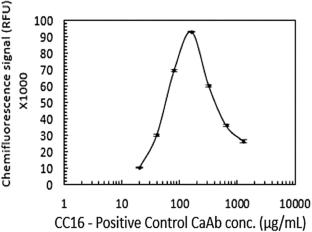Lab on a chip for detecting Clara cell protein 16 (CC16) for potential screening of the workers exposed to respirable silica aerosol
Abstract
Early detection of pulmonary responses to silica aerosol exposure, such as lung inflammation as well as early identification of silicosis initiation, is of great importance in disease prevention of workers. In this study, to early screen the health condition of the workers who are exposed to respirable silica dusts, an immunoassay lab on a chip (LOC) was designed, developed and fully characterized for analyzing Clara cell protein 16 (CC16) in serum which has been considered as one of the potential biomarkers of lung inflammation or lung damage due to the respirable silica dusts. Sandwich immunoassay of CC16 was performed on the LOC developed with a custom-designed portable analyzer using artificial serums spiked with CC16 protein first and then human serums obtained from the coal mine workers exposed to the respirable silica-containing dusts. The dynamic range of CC16 assay performed on the LOC was in a range of 0.625–20 ng/mL, and the achieved limit of detection (LOD) was around 0.35 ng/mL. The assay results of CC16 achieved from both the developed LOC and the conventional 96 well plate showed a reasonable corelation. The correlation between the conventional reader and the developed portable analyzer was found to be reasonable, resulting in R2 ~ 0.93. This study shows that the LOC developed for the early detection of CC16 can be potentially applied for the development of a field-deployable point-of-care testing (POCT) for the early monitoring of the field workers who are exposed to silica aerosol.


 求助内容:
求助内容: 应助结果提醒方式:
应助结果提醒方式:


